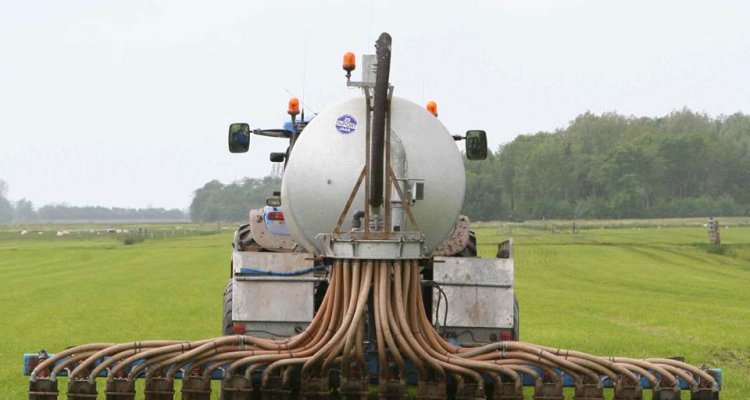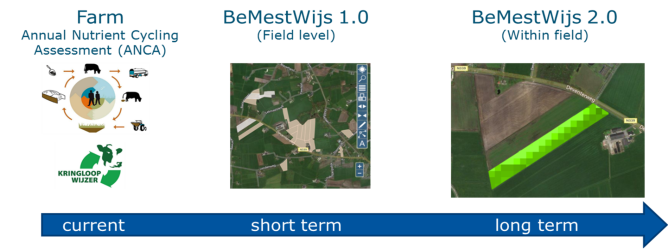
Use case
Smart manure application & utilisation: a practical tool for issuing advice on manure application
Applying the right amount of manure at the right time to minimise environmental load and maximise growth is a yearly challenge for dairy farmers. At present, advice on manure application is generally issued at the farm level, despite potential differences in fertiliser requirements per field and even within the same field. Practical guidelines to better distribute the available manure (i.e. nutrients) across fields at the best possible time can help dairy farmers optimise the utilisation of nutrients by the fields. This will minimise nutrient loss to groundwater, surface water and the air. Precision manure application can also help to achieve the climate goals set by the Dutch government.
Our approach: using data sources to optimise manure application
During a manure hackathon (MestHack), a multi-disciplinary team developed a management tool for dispensing practical advice on how and when to apply manure at the field level. This advice is based on combining data from existing management tools (e.g. KringloopWijzer) with farm-specific data (e.g. grass yields and nitrogen surpluses), open-source data and sensor data. Innovative data-driven prediction models, such as gradient boosting machines, will be used to develop predictive algorithms for manure applications for this tool. The farmers will receive field-level advice about when to fertilise, which fields to fertilise, and how much fertiliser to use. In the long run, farmers may also be given specific fertilisation advice within the field level, for every 10 m2. This advice will be offered at five key moments in each new growing season for grass and crops (corn).
(Expected) impact of the approach
The management tool BeMestWijs (smart manure application) will help farmers apply the right amount of manure at the right time for each field and for specific areas within each field. Precision manure application optimises overall manure application and minimises over-application. This in turn minimises the loss of valuable nutrients and contributes to a reduction of greenhouse gases through more effective manure management.
Next steps
The next step will be to define and develop a data infrastructure that allows for the collection and storage of data, to develop a business model and to develop predictive application models.
First draft of management tool for the provision of field-specific manure application (e.g. optimum time range of manure application for specific fields).


Tools used
The Big Data method involves the collection and combination of a variety of data sources (all with different velocities). Data-driven prediction models will be developed, such as a gradient boosting machine.
Cooperation with partners
- LTO Bedrijven
- LTO Noord
- DairyCampus